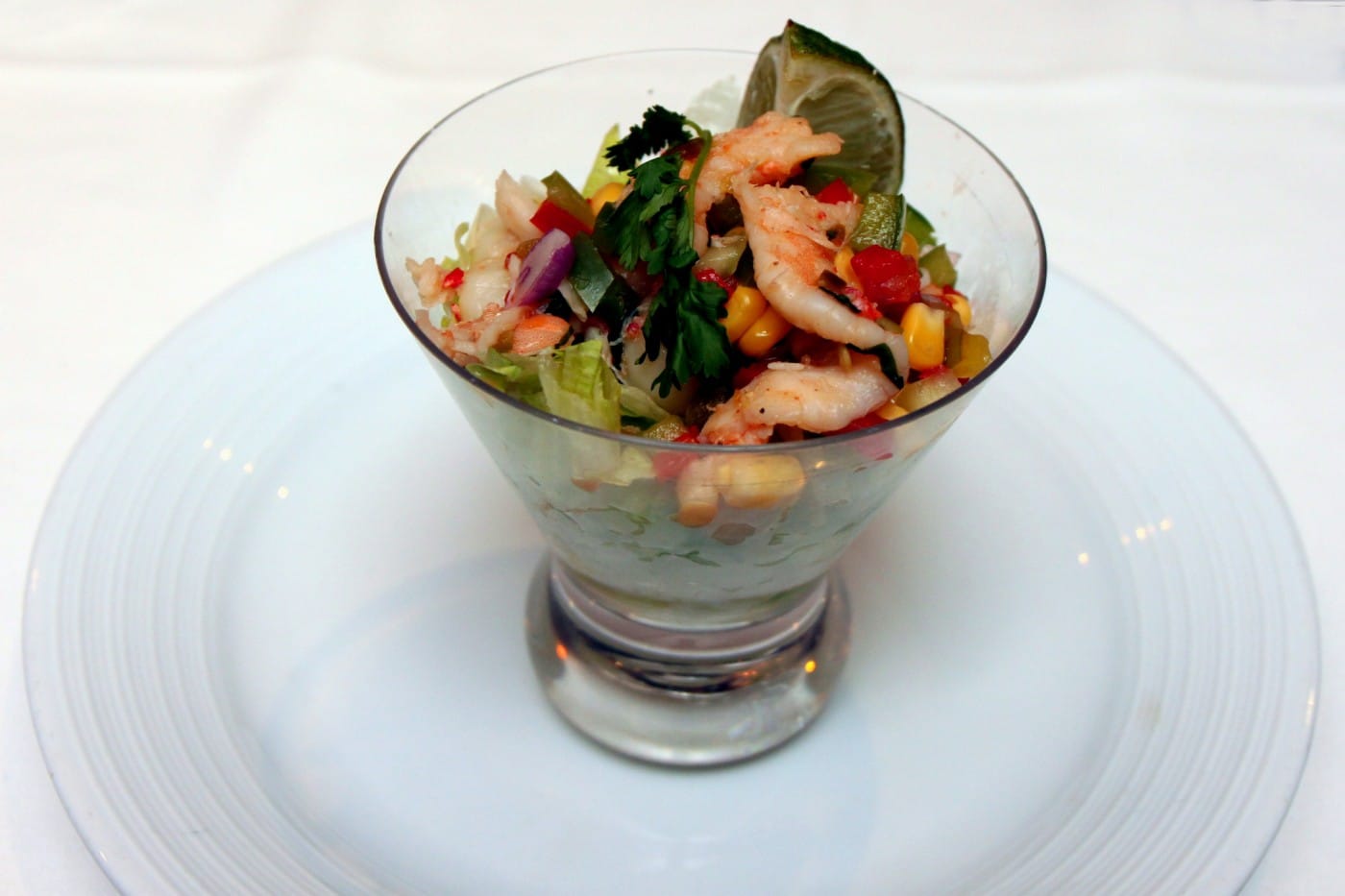
Flying Fish in lemon butter sauce with fungi sweet potato and plantains.
Chopped conch with herbs and spices served with coconut Run Down sauce.
Goat stewed with a blend of cilantro, garlic, onions, red pepper, leeks, scallions and rosemary in a red wine sauce.
These mouth-watering menu descriptions alone are enough to conjure up images of dining barefoot on a white sand beach, azure-hued water lapping at the shore on a sun-drenched day. A steel drum band is playing a lilting melody in the distance.
You’re in paradise or heaven – or both.
The background to these intensely creative culinary dishes dates back to when native tribes including the Carib, Arawak and Lucayan Indians made the Caribbean islands their home. These early inhabitants were very skilled at hunting, fishing and farming for sustenance, a great benefit to Columbus when he first sailed through the islands in 1492.
In the centuries following, the Caribbean islands became home to a variety of cultures and peoples – the Spanish, Africans, French, Dutch and East Indians for example. And it’s this amalgamation of cultures, mixed with their own foods, flavors, seasonings and cooking styles, that makes gastronomic adventures in the Caribbean so unique and memorable.
So no matter which island you visit: Puerto Rico, Trinidad, Tobago, Guadeloupe, St. Vincent, Haiti, Bonaire, Antigua or Curacao, you are guaranteed to savor some of the most distinctive, sensory-enveloping, taste bud tantalizing, epicurean excellence found anywhere on the planet.
Add just a pinch of…
The diversity of the Caribbean people is just one reason why the islands offer such an array of specialty regional dishes. The Spice Trade, which had its heyday during the heavy colonization periods, rum production and early maritime trading significantly augmented the availability of seasonings, fruits, vegetables and livestock commonly found today.
Although every island possesses its own distinctive or widely recognized dish, most of the lush vegetation that dots nearly all of the islands yields numerous cooking staples. Among these are coconut, plantain, sweet potato and rice as well as a wide variety of squash, melons, onions and beans, to name a few.
It goes without saying that fresh fish and seafood, plucked from the sea surrounding the various islands literally a few hours—if not even minutes—before it hits your plate, comprises a great many of the well known dishes. Likewise, beef, pork, poultry and other meats make scrumptious appearances on restaurant menus and in home cooked meals all over the Caribbean.
Ready for a little gastronomic island hopping? Grab a napkin, bring your sense of adventure, and let’s eat!
Just Like Momma Used to Make
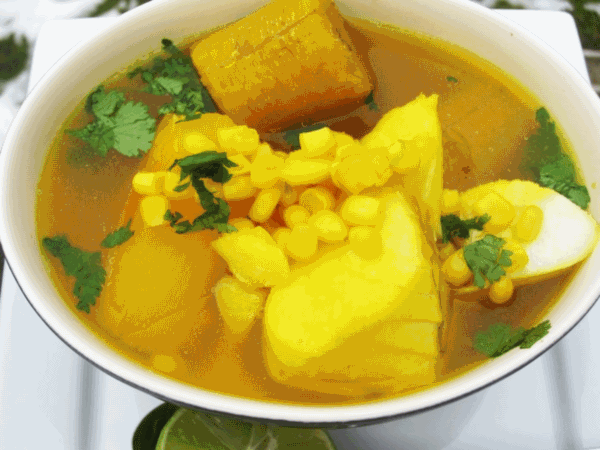
Sancocho (pronounced san-co-cho), prepared with a mélange of ingredients including beef, chicken, pork, yucca, potatoes, plantains, yams, green pepper, olive oil and spices, comes out like a thick, bold soup and is the national dish of the Dominican Republic.
The ubiquitous plantain is one of the essentials found in the national dish of St Kitts & Nevis, Stewed Salt Fish with Dumplings, Spicy Plantains and Breadfruit. Each component is created with a special combination of ingredients (think scallions, hot sauce, garlic, ginger, thyme and tomatoes, to name a few) that together gives rise to an amazing entrée combination.
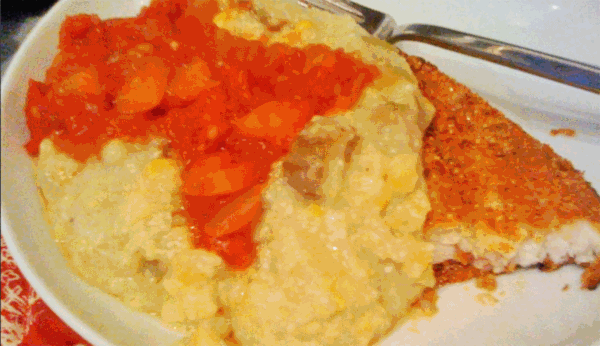 In Barbados, be sure not to miss a savory plate of Coucou and Flying Fish. Served a la carte or as a main entrée, the fish is paired with coucou—a cornmeal cooked with flour and okra—and flavored with celery salt, white pepper, marjoram, onion and thyme, then served with fresh vegetables and/or rice.
In Barbados, be sure not to miss a savory plate of Coucou and Flying Fish. Served a la carte or as a main entrée, the fish is paired with coucou—a cornmeal cooked with flour and okra—and flavored with celery salt, white pepper, marjoram, onion and thyme, then served with fresh vegetables and/or rice.
Grilled Snapper with Sauce au Chien is said to be one of a number of national dishes found in Martinique. Made with peppers, white onion, basil, lime juice, black pepper, garlic and a handful of spices, it’s a hearty main dish with a truly unique flavor.
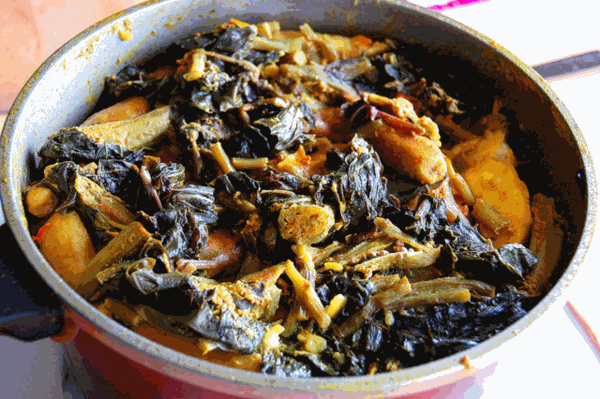
In Grenada, while “Oil Down” may seem like a request for more sunscreen (we are in the Caribbean after all), it is actually a popular dish made with salt meat, breadfruit, homemade dumplings, coconut milk, green peppers, celery and onion. An almost identical version is served in Trinidad by the same name, and in Guyana and Jamaica as Maetem Ghee and Run Down, respectively.
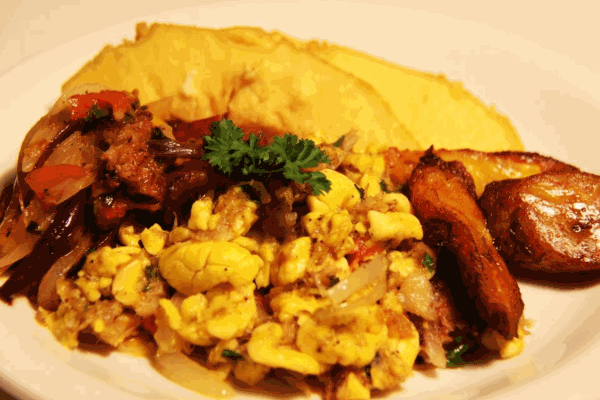
Lunch or dinner is not the only time to enjoy an amazing national dish. In Jamaica, the way to start the day is with Ackee and Salt Fish. Here ripe ackee, a fruit (although tasting more like a vegetable) that bears a resemblance to scrambled eggs when cooked, and salt fish are combined with scotch bonnet peppers, red and green peppers, onion, black pepper and vegetable oil. (Cooking and dining note: unripe ackee is poisonous).
The national breakfast dish in St Lucia is Green Fig and Salt Fish Pie, the figs and fish seasoned with lime juice, black pepper, sweet peppers and onion, then combined with bread crumbs, tomatoes, milk and cheese. If that doesn’t get you going in the morning, I don’t know what will!
In the Bahamas conch (pronounced “konk”) fish, a Caribbean favorite appears in Crack Conch with Peas and Rice. Here, the conch is fried in tempura batter and served with pigeon peas, and flavored with fresh thyme, tomato and tomato paste, onion and bacon or salt pork. Although traditionally served with peas and rice, it can sometimes be accompanied by fried plantains, macaroni and cheese, cole slaw or potato salad.
And if stews speak to your palate, order the Belizean Rice and Beans with Fish Stew when in Belize. Made with sweet red and green pepper, onion, seasoning salt, black pepper, thyme, vinegar, lemon, garlic powder and red beans, the piece de resistance of this dish is a finishing of coconut milk.
Sit back and enjoy!
I don’t know about you, but I’m ready to throw my passport, swimsuit and sunscreen into a bag and head for the nearest airport!
My itinerary? Distinctive, outrageous, unexpected, captivating, flavorful and downright amazing meals prepared with lots and lots of love. It’s thebest way to describe Caribbean cuisine – among the best found on the planet.
[photomosaic]

